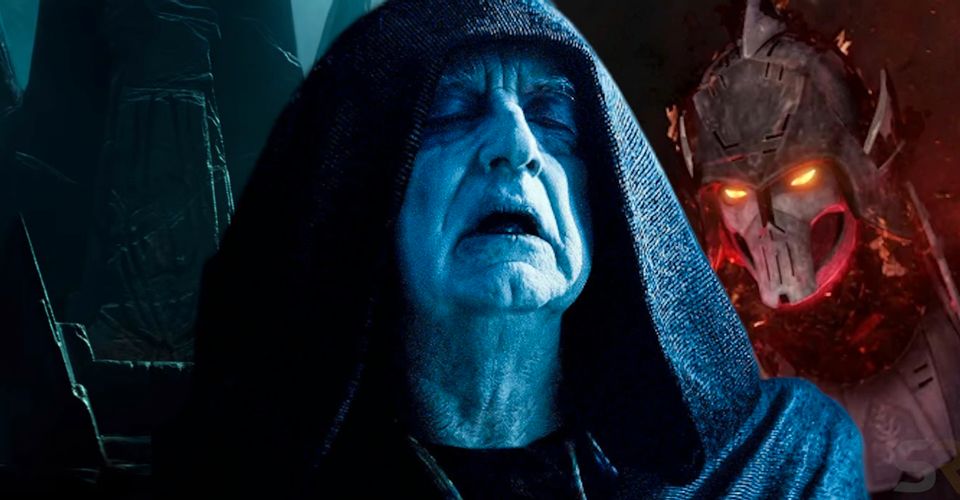Star Wars: The Rise of Skywalker Retcons Sith Origins & Planet

Star Wars: Episode 9 – Rise of Skywalker, has retconned the origins of the Sith as well as the planet from which they came. The Sith are an entity as old as Star Wars itself (even if the name didn’t appear on-screen until the prequels) and have been elaborated on in all forms of media. Even though their roots have been fleshed out in canon before, the final film in the Skywalker Saga has taken the Sith as a whole in a totally new direction.
Thanks to the return of Emperor Palpatine as a clone, Star Wars: The Rise of Skywalker took the opportunity to expand on the Sith mythos, completely changing what audiences know about the Sith, where they came from, how their belief system works, and the power transfer within it.
While these changes aren’t all spelled out in detail in Star Wars: The Rise of Skywalker, there has been enough breathing room left for everything to be sorted out as necessary. The Sith are a big deal in the Star Wars universe, so the changes in Rise of Skywalker could have a big impact on future Star Wars canon. Thankfully, while different from fans’ previous understanding, there are enough puzzle pieces in Rise of Skywalker to piece a lot of it together.
Exegol Is The Sith Homeworld In Rise of Skywalker, Not Korriban/Moriband

First and foremost, the homeworld of the Sith has seen a pretty major change thanks to Rise of Skywalker. As had been established in canon previously, the fabled Dark Side stemmed back to Korriban in the Expanded Universe, later renamed Moriband for current Star Wars canon. This concept was something developed with a lot of the old expanded universe lore set during the Old Republic time period. Though it never saw the big screen, the planet was shown during season 6 of Star Wars: The Clone Wars, even warranting an odd cameo from Darth Bane himself.
Early on in Episode IX, the importance of Exegol is established. Despite Moraband’s previous relevance, it was never even mentioned. Instead, the newly introduced planet of Exegol filled that position, housing not only the decaying body of Emperor Palpatine but an entire society based around the beliefs and teachings of the Sith. It was very clearly an evil place, shrouded in darkness and rife with high winds and lightning and a temple full of Sith statues. While this certainly doesn’t erase Maraband’s past significance in canon, it’s clear Palpatine holds it in higher regard when choosing a modern home planet.
Palpatine & The Sith Survived Return of the Jedi

One of the biggest questions going into Star Wars: Rise of Skywalker was how exactly Palpatine managed to survive the events of Star Wars: Return of the Jedi. Some theorized that perhaps the individual shown in the film was a clone of the original Emperor, which has finally been confirmed by The Rise of Skywalker’s novelization. While this does help clear up the fogginess as to how he survived to some extent, it also manages to raise more questions as to how his consciousness was transferred.
Never before in canon has a Sith spirit passed itself from one body to another. Sith had possessed masks and other artifacts, and hints of such possibilities were present in prior media, however nothing to this extreme. Somehow Palpatine made himself new bodies and had been living in one, or possibly many over the past 30+ years he has spent on Exegol.
The Sith Rule of Two Passes Power Down

The Sith Rule of Two was simple, there could only be 2 Sith Lords at any one given time. The apprentice would inevitably strike their master down in the name of power, and would in turn take on an apprentice of their own in due time. Darth Bane created it as a way to keep Sith power consolidated and so that they did not let their greed and lust for more power wipe them all out. This was something conceived years ago and was based on keeping their culture alive, as opposed to the transfer of individual power. This has become a given in Star Wars lore, however, Star Wars: The Rise of Skywalker flips the concept on its head when it reveals the Emperor’s survival and grander plan.
As the final true Sith with no apprentice, Palpatine was left to either die, and with him the Sith legacy, or bring on someone far younger and Force enabled to take his place. His lightning-wielding granddaughter, Rey, was the most viable choice. In this context, Palpatine needed her to kill him in order to transfer his spirit as well as all of those who came before him into her body. All of the Sith lived within him, so he needed her to act as a vessel for power that had been acquired for generations. This changes the way we understand the Rule of Two, revealing it was essentially a trick to harness the greed and ambition of Sith apprentices and enable the master to pass on into them upon death.
While Star Wars: The Rise of Skywalker establishes a lot of new Sith lore, it’s not without rhyme or reason. Palpatine needed to hide in the Unknown Regions to build the First Order undetected, making Exegol better than Moriband, and the flip of the Rule of Two actually makes more sense with the Sith’s selfish and deceptive nature. Even so, with fans split in their reaction to The Rise of Skywalker, any deviation from previously established canon is sure to draw ire. It’s not clear how much the franchise will deal with the Sith now that the Skywalker Saga has come to a close, but it will certainly be interesting to see how any of these new elements impact the way the Sith are depicted in future Star Wars stories.
About The Author
















